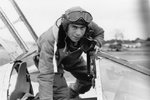FLYBOYJ
"THE GREAT GAZOO"
It was only complicated becuase at the time the USAAF gave little consideration to in-depth twin engine aircraft training.Sal Monella said:The P-38's my favorite plane. I know I read of concerns about it being a complicated plane to fly and maintain.

